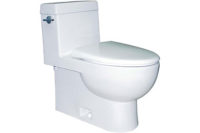The Freedonia study, titled Industry Study 1170: World Valves, attributes average growth of 6.6% over the next four years to the ongoing recovery of Asian countries from their financial crisis of the last two years. Many of these nations had been among the fastest growing markets prior to that.
However, considerably slower growth is expected in the relatively mature markets in more developed countries, such as the United States, the United Kingdom and Australia.
Shipments to rise 90%
Global valve shipments in 2008 will be about $80.8 billion, an increase of 90% in 10 years. The increase will be led by the Chinese market, which is expected to nearly triple during the decade to shipments worth $7.2 billion.The value of actual valve shipments in the United States is projected to reach $15.8 billion in 2008, up 73% from $9.2 billion in 1998. With a growth rate of 66.5%, Western Europe will trail other regions.
The greatest demand for valves will be in emerging economies that are rapidly adding and expanding utilities to their infrastructures, said Michael Deneen, an industry analyst with the Freedonia Group and one of the study's authors. However, in more developed nations, the valve market will emphasize automation.
"In the United States, electricity deregulation presents some good opportunities with cogeneration," Deneen said. "Those valve products in many cases are more customized and higher-end, and they tend to be sold directly by the manufacturer to the end user. That may be a bit of bad news for wholesalers."
Deneen anticipates "respectable" growth in the American valve market in the near term, despite a slowdown from the red-hot economy of the last several years. "A lot of capacity has been added in the last five years, and that will reduce the amount of capital expenditures needed in the next five," he explained. "But there will still be a lot of valve replacement by processing manufacturers."
The Asian market is getting close to its pre-crisis levels, Deneen said, with full recovery by early next year in most countries at the latest. "Increases in the standard of living in Asia create a demand for valves for upgraded housing. Statistically Latin America is growing the fastest, but Asia presents the greatest opportunities for growth."
Deneen also predicts increased use of the Internet for valve purchases, as well as more involvement by manufacturers representatives.
"The Internet is obviously changing how things are being done," he noted. "I'm not sure how that will play out in terms of technical assistance for more advanced products, but for lower-end valves, the Internet will certainly become more of a factor."
The complete study is available for $4,200 from the Freedonia Group. Portions of the study are also available over the Internet.
For more information, call Corinne Gangloff at 440/646-0809, or visit the firm's Web site at www.freedoniagroup.com.

